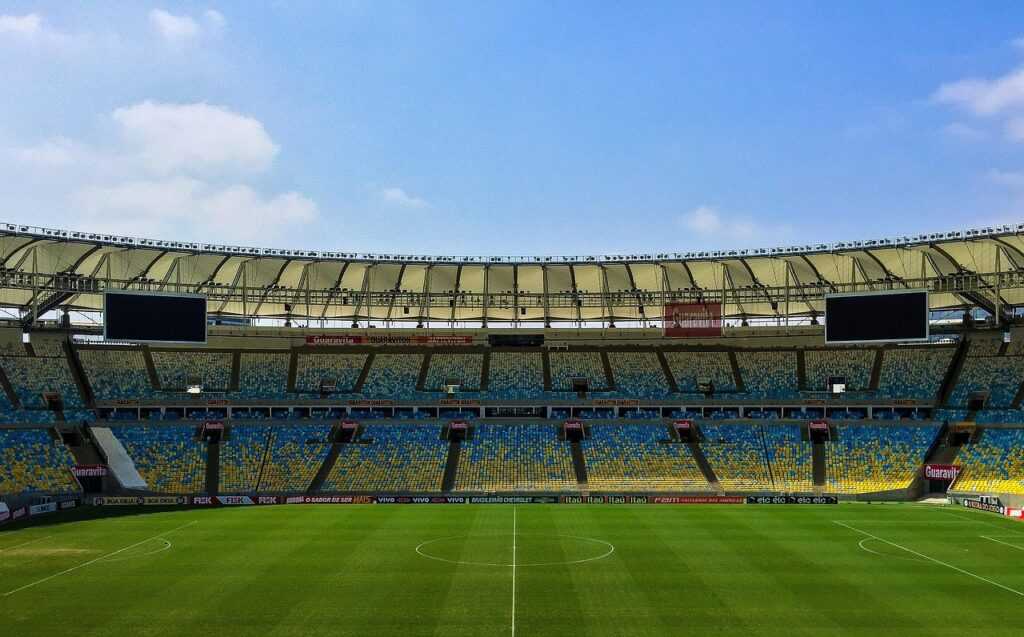Understanding International Soccer Rivalries
International soccer rivalries influence the broader dynamics of the game. These rivalries often emerge from historical, political, or cultural contexts. For example, Spain vs Portugal reflects centuries-old tensions, while Argentina vs Brazil showcases South American supremacy. These matches become more than just games; they symbolize national pride and identity.
Players’ development often benefits from high-stakes rivalries. Intense competition pushes top athletes to elevate their performance. Iconic players like Lionel Messi and Cristiano Ronaldo have shown peak performance in rival matches. This kind of pressure fosters resilience and skill.
Fans play a crucial role in these rivalries. Passionate supporters create electrifying atmospheres, turning stadiums into cauldrons of noise. Examples include the fervent crowds during Italy vs France matches and England vs Germany showdowns. This fan culture intensifies the stakes, making victories sweeter and losses bitter.
Team strategies adapt significantly for rivalry matches. Coaches meticulously plan tactics to counter specific threats. For instance, tactical battles in Germany vs Netherlands games often highlight strategic nuances. Success in these matches can define coaching careers and national team legacies.
Using rivalry data, we observe that international football rivalries significantly shape player performance, fan engagement, and team strategies.
Historical Background of Key Rivalries
Examining the roots of international soccer rivalries reveals how these fierce competitions have evolved. Key rivalries in Europe and South America dominate the landscape, while emerging rivalries in Asia and Africa add new dimensions to the global game.
Europe: A Rivalry Powerhouse
Europe’s soccer rivalries often trace back to geopolitical tensions. England vs. Germany is one of the most storied rivalries, crystallized by the 1966 World Cup Final. The match, which England won, remains a point of national pride. Another notable rivalry is between Spain and Portugal, fueled by historical conflicts and proximity. Noteworthy matches include the 2010 World Cup Round of 16, where Spain triumphed. Italy vs. France also stands out, highlighted by Italy’s 2006 World Cup Final victory.
South America: Passion Unleashed
South American rivalries are synonymous with intense passion. Brazil vs. Argentina is perhaps the most iconic. Meetings between these two footballing giants, like in the 2007 Copa América Final, capture global attention. Matches often become battlegrounds where national pride is fiercely defended. Another significant rivalry is Uruguay vs. Argentina, the oldest international fixture outside the UK, originating in the late 19th century. These encounters remain deeply influential within the continent’s soccer narrative.
Emerging Rivalries in Asia and Africa
Asia and Africa are witnessing the rise of new soccer rivalries. In Asia, Japan vs. South Korea stands out. Both countries boast growing soccer reputations, with memorable clashes such as the 2011 AFC Asian Cup semifinal. In Africa, Egypt vs. Algeria represents a heated rivalry. The tension peaked during the 2009 World Cup qualifiers, marked by fierce competition and political undertones. These emerging rivalries are crucial in shaping soccer’s expanding global influence.
Effects on Players and Teams

International soccer rivalries impact players and teams in profound ways. These effects manifest through various elements, including performance and psychology.
Heightened Performance Under Pressure
- Rivalry matches elevate player performance.
- Competition drives athletes to push their limits. In matches like Brazil vs. Argentina, players often exhibit extraordinary skills.
- High-stakes environments create scenarios where athletes pursue excellence.
- Messi and Ronaldo deliver their best under rivalry conditions, showcasing their talents.
- Teams adapt, creating tactics to exploit their strengths and counter opponents.
- Coaches strategically plan for these encounters, understanding the unique challenges rivalries present.
Psychological Impact
Rivalry games also influence player psychology. High expectations from fans and media increase pressure. Athletes face intense scrutiny and stress, impacting their mental health. However, if channeled positively, this pressure fosters mental toughness. Players develop resilience, managing stress and performing under extreme conditions. Team dynamics shift, as collective focus on winning bolsters camaraderie. Coaches must address psychological factors, preparing players mentally for high-pressure situations. Psychological support mechanisms often become crucial for optimal performance.
Influence on Fans and Culture
International soccer rivalries profoundly impact fans and culture, each match blending national pride and fervent engagement. These effects manifest in various forms, from boosting national pride to increasing fan engagement and media coverage.
Boost to National Pride
Rivalry matches often symbolize more than just a game; they reflect national pride and unity. During these encounters, fans wave flags, wear national colors, and sing anthems passionately, creating scenes of unforgettable patriotism. For example, a Brazil vs. Argentina match can bring cities to a standstill, with everyone tuned in to support their country. Victory in such matches becomes a source of immense national pride, strengthening national identity and unity.
Fan Engagement and Media Coverage
Rivalry games typically generate extraordinary fan engagement and media attention. Stadiums sell out quickly, and viewing parties gather thousands, creating a festive atmosphere. Fans engage in pre-match debates, often analyzing team strategies and player performances. Media outlets capitalize on this fervor, providing extensive coverage including:
- interviews
- expert analyses
- behind-the-scenes stories
Social media platforms buzz with real-time reactions, and hashtags related to the match trend globally. Television ratings for these matches often exceed regular games by a significant margin. For instance, during an England vs. Germany match, TV ratings in the UK can spike by over 30%, demonstrating the deep interest and emotional investment of fans. This extensive media coverage amplifies the game’s impact, solidifying its place in popular culture.
Throughout these events, the unique blend of competition, national pride, and media frenzy shapes not only the immediate experience but also the long-term cultural identities of the participating nations.
Economic and Political Implications
International soccer rivalries don’t just impact the game; they carry significant economic and political consequences. These intense matchups drive substantial financial gains and affect diplomatic relations between nations.
Economic Gains from Rivalry Matches
Major rivalry matches generate substantial revenue for host cities. These events attract massive crowds, boosting local businesses and tourism. For example, a Brazil vs. Argentina match can pack stadiums and fill hotels, restaurants, and other local venues. Advertising revenue skyrockets, with companies eager to associate their brands with these iconic clashes.
Broadcasting rights for these matches often fetch higher prices than regular games. Networks pay premium prices to secure broadcasting rights, knowing that viewership will be high. Merchandising also sees a significant uptick, as fans purchase jerseys, scarves, and other memorabilia to support their teams.
Political Dimensions and Diplomatic Relations
Political tensions often underpin these rivalries, heightening their intensity. Matches between countries with historical conflicts, such as England and Germany, carry deep nationalistic sentiments. These encounters can serve as proxy battles, where the outcome feels symbolic of broader political struggles.
Diplomatic relations can be affected positively or negatively by these games. A peaceful match where teams respect each other can foster goodwill and open dialogue between nations. Conversely, contentious games marred by conflicts or poor sportsmanship can strain diplomatic ties. When Spain and Portugal face off, their historical and political relationships come into sharp focus, influencing public perception and diplomatic corridors alike.
Prospects for Future Rivalries
International soccer rivalries continue to evolve, creating fresh and engaging dynamics within the sport. Examining these potential developments reveals intriguing possibilities.
Potential New Rivalries
Emerging international soccer teams may shape the future landscape of rivalries. Teams like Croatia and Belgium have demonstrated significant potential in recent tournaments. Their performances in the 2018 FIFA World Cup showcased their capabilities, and sustained success could ignite new rivalries with traditional powerhouses. Similarly, African nations like Senegal and Nigeria are reaching new heights, promising future confrontations that could captivate global audiences.
Consistent qualifying and notable performances in international tournaments often drive the emergence of new rivalries. As more teams from diverse regions grow stronger, these rivalries can help elevate the profile of international tournaments.
Role of Globalization and Technology
Globalization and advancements in technology significantly influence modern soccer rivalries. Players often transfer between international leagues, creating connections and competitive tensions across borders. For example, a Brazilian player in the English Premier League might face off against club teammates during international fixtures, adding a layer of personal rivalry to national contests.
Technology has also enhanced how fans engage with these rivalries. Social media platforms create spaces for fans worldwide to share opinions, celebrate victories, and discuss matches in real-time. Streaming services and global broadcasting agreements ensure matches reach wider audiences, fostering a deeper, more connected global soccer community. These technological advancements enrich the experience of international soccer rivalries, ensuring they continue to capture global attention.



